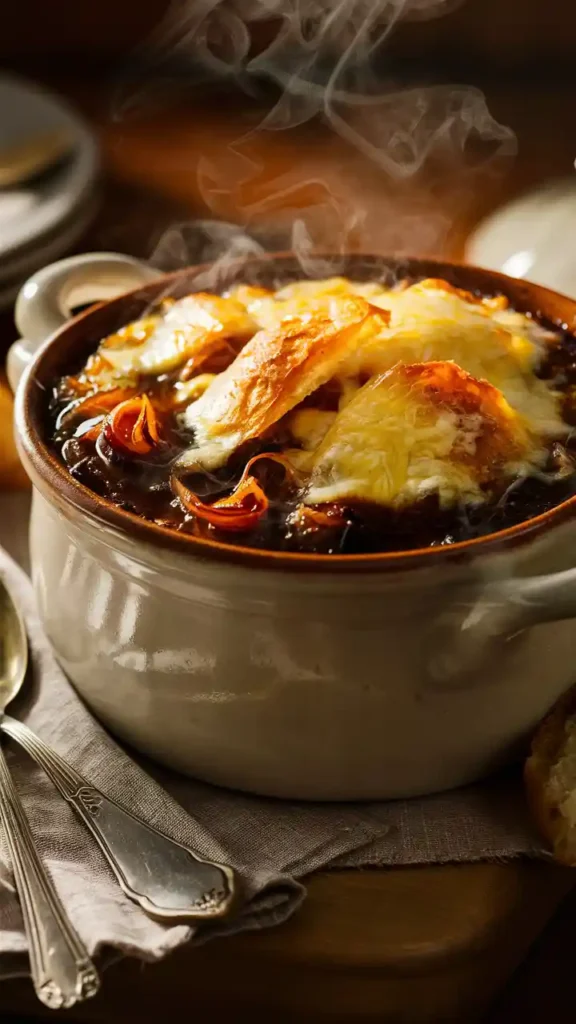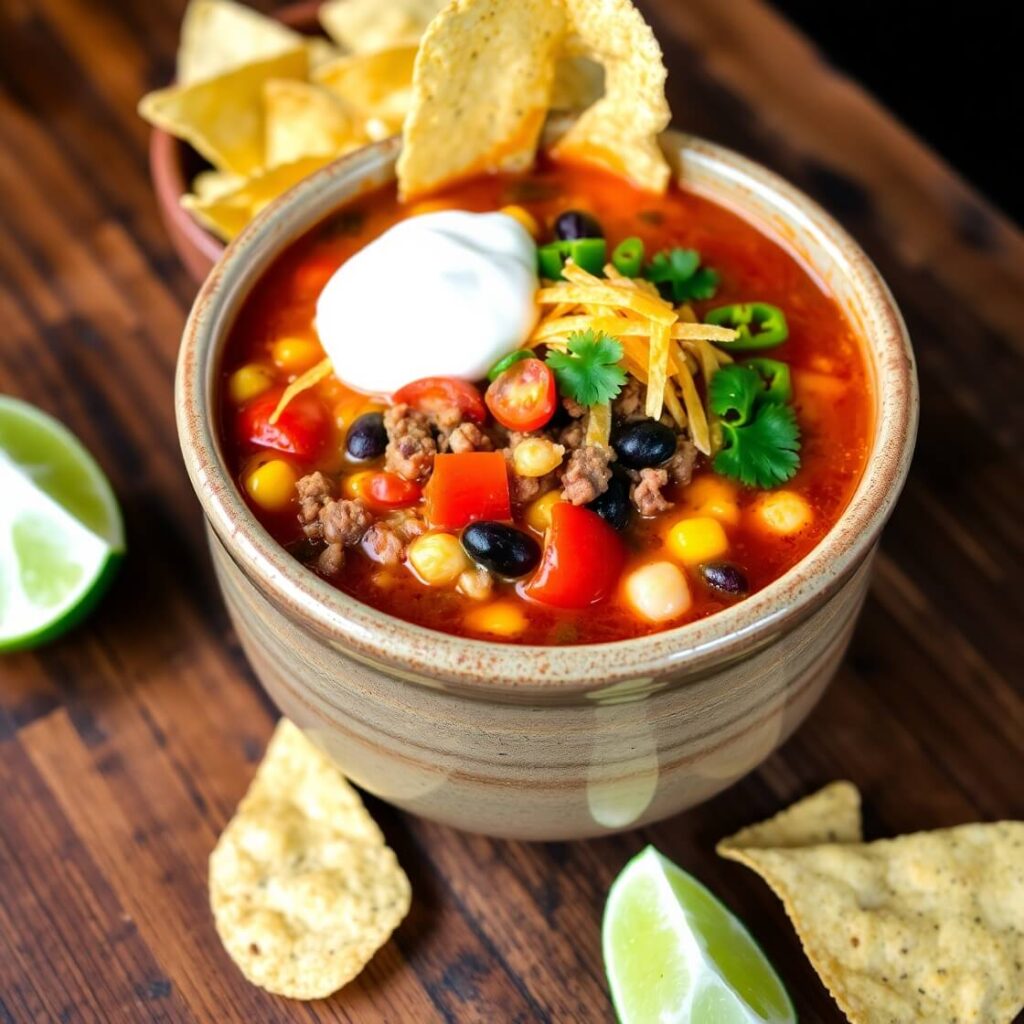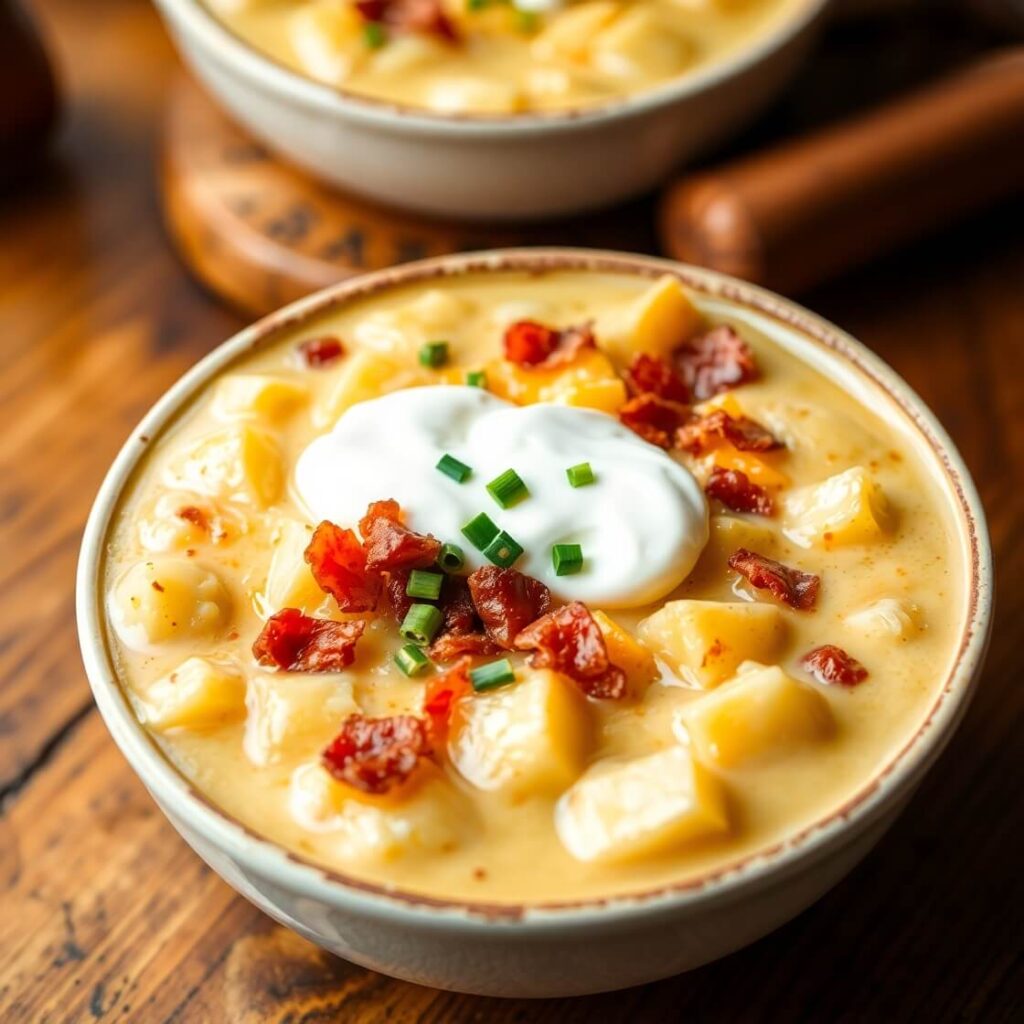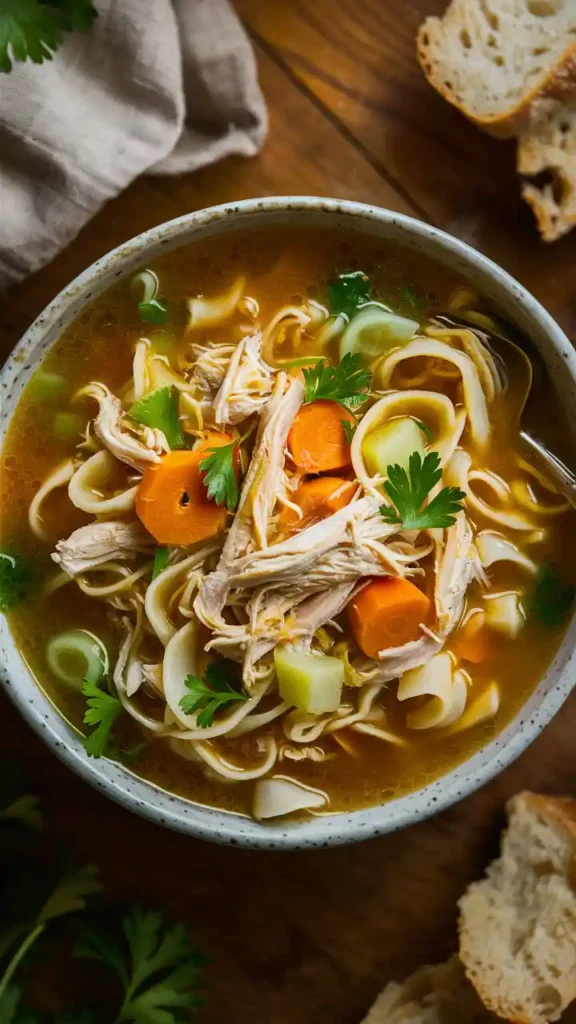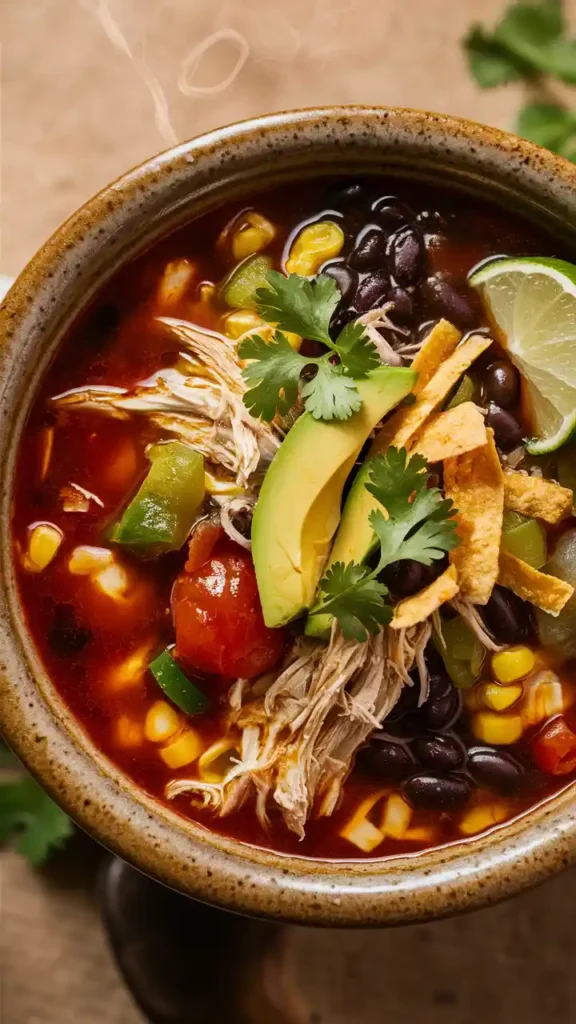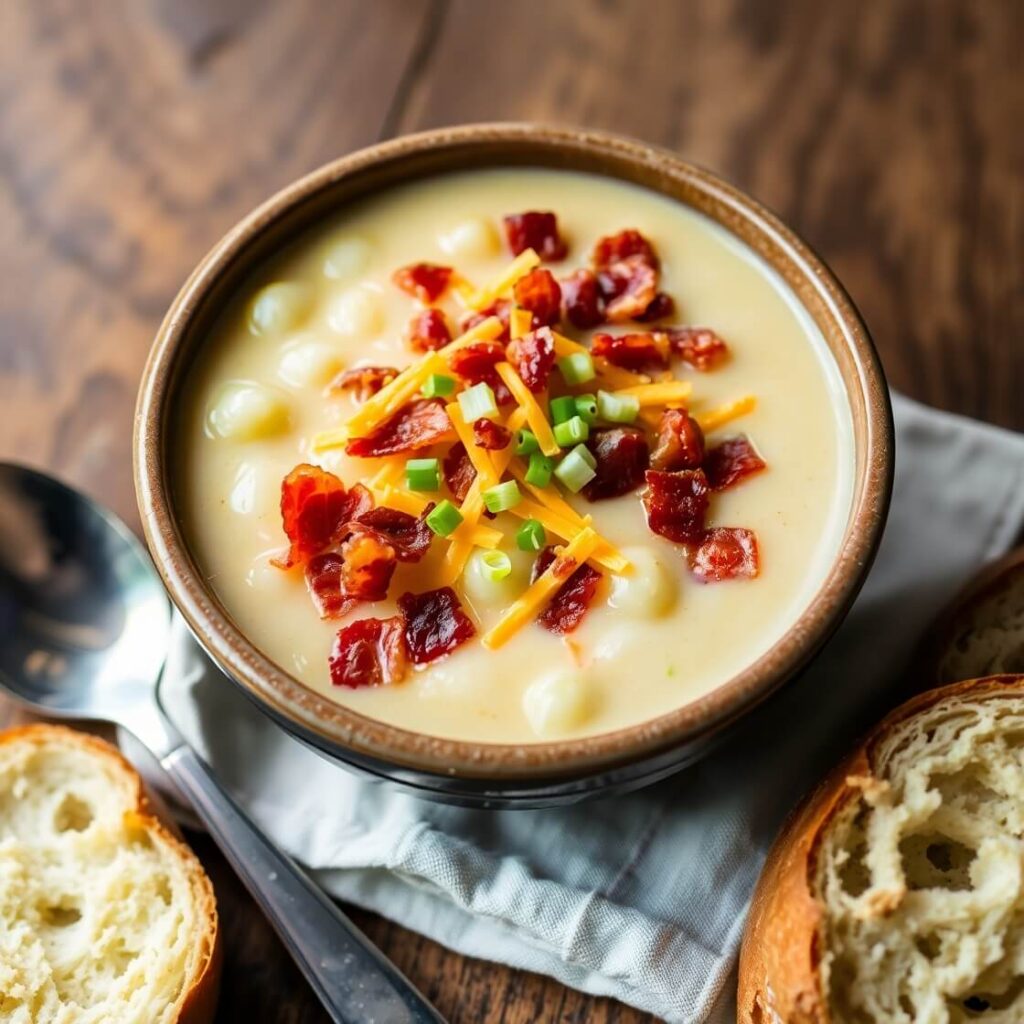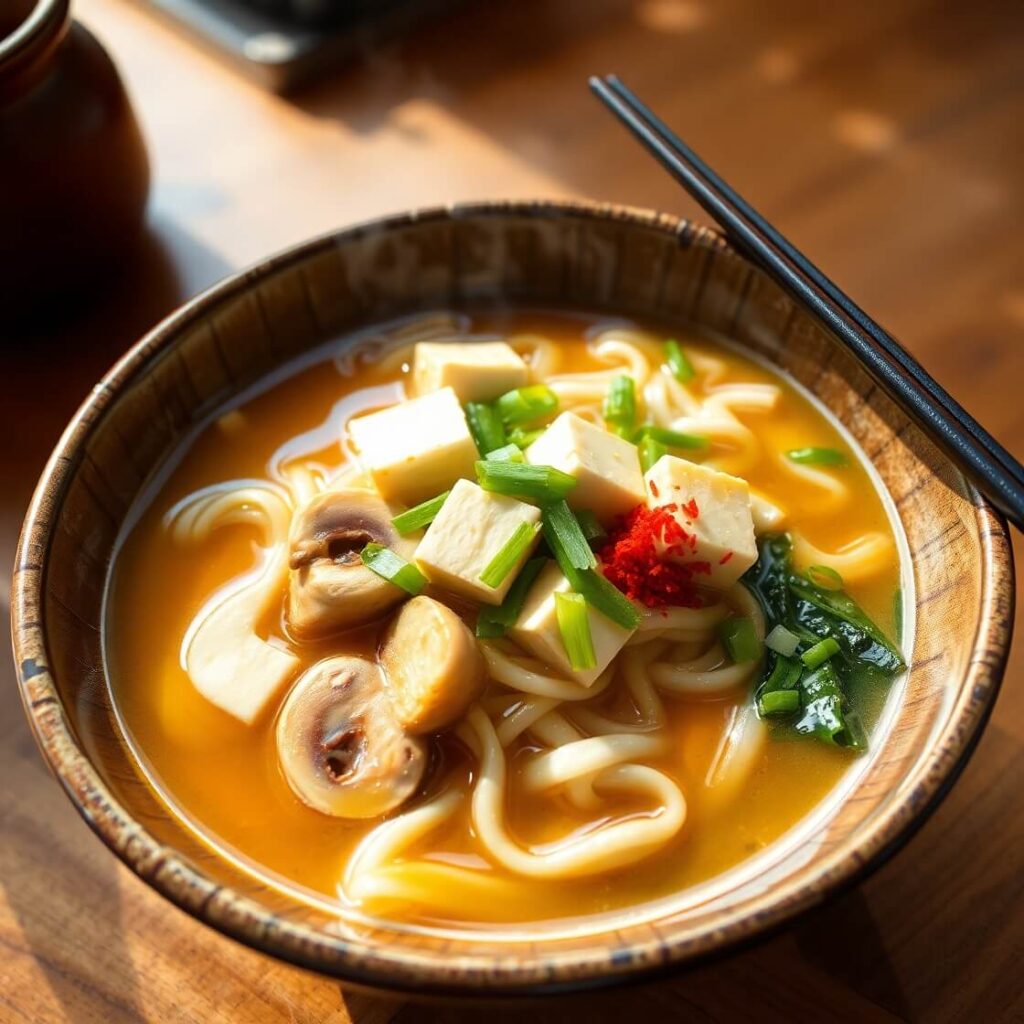Rich and Simple French Onion Soup
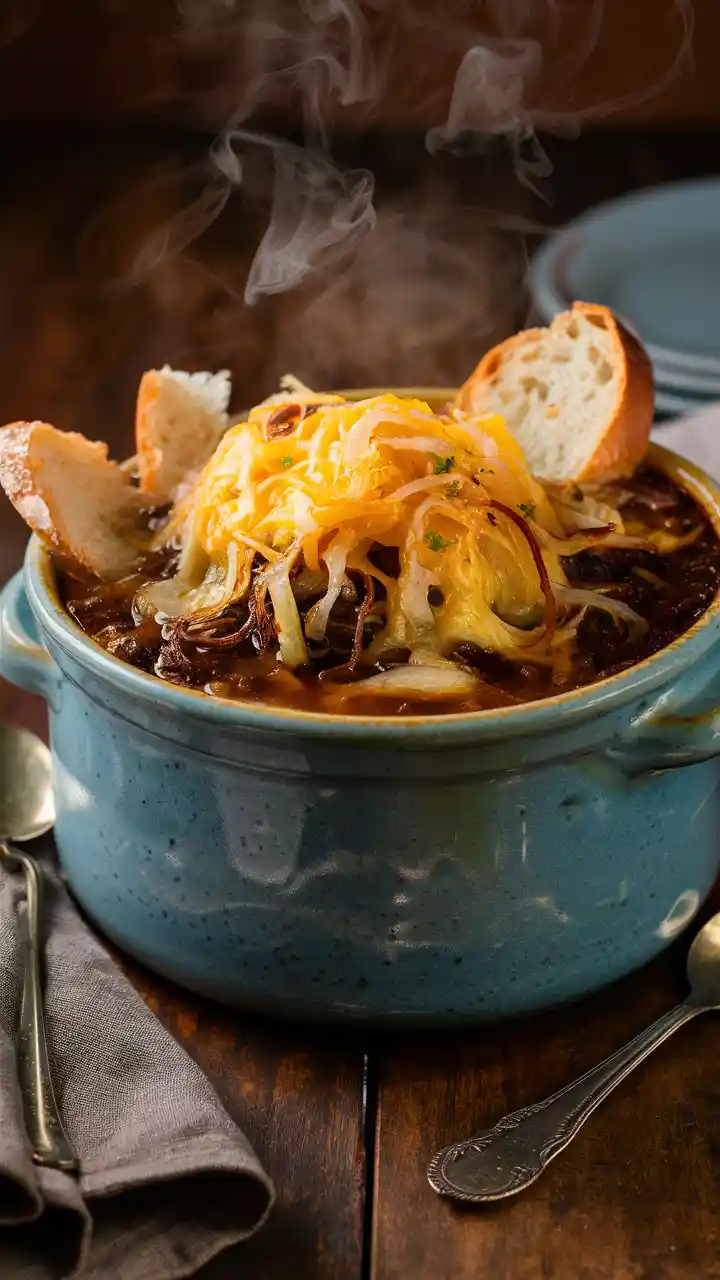
I’ll never forget the first time I tried making French onion soup on my own. It was a chilly November evening, the kind that makes you want to curl up in a blanket with something warm simmering on the stove. I had just come back from the farmer’s market with a bag of glossy yellow onions, the smell so sweet it practically begged to be caramelized.
I thought, how hard could it be? Slice some onions, melt some butter, add broth, bake with a cheesy crouton on top. Simple, right? Wrong. My first attempt turned into a smoky, slightly bitter mess because I rushed the caramelization process. But even as my kitchen filled with that burnt-sugar smell, I knew I had stumbled upon something magical—the aroma alone promised a soup that would feel like comfort in a bowl. From that point on, French onion soup became my “slow-cooked therapy.”
Over the years, I’ve learned patience is everything with this recipe. Let the onions soften and deepen in color slowly, and they’ll reward you with that rich, sweet base that makes French onion soup unforgettable.
Why It Works
- Depth of Flavor: Slow-cooked caramelized onions, rich broth, and a splash of wine create the base.
- Cheese Choice: Gruyère is classic, but adding Emmental enhances meltiness and flavor.
- Bread Matters: Thick slices of rustic baguette, toasted until golden, soak up the broth and hold the cheese perfectly.
- Balanced Contrast: Sweet onions, savory broth, and gooey cheese come together for a crave-worthy combination.
What You’ll Need
When I shop for this soup, I treat it like a mini adventure. Here’s what matters:
- Onions: Yellow onions are ideal—they caramelize beautifully. Some recipes mix in a bit of sweet onions for extra sugar content, but I usually stick with yellow.
- Butter and oil: As mentioned, a blend gives flavor without burning.
- Broth: I’ve tried everything from store-bought to homemade beef broth, and trust me, homemade makes it feel luxurious. But a high-quality store version works beautifully on weeknights.
- Wine: Optional, but it adds that subtle depth. I usually keep a dry white wine handy, but red works in a pinch for a richer taste.
- Bread: A good baguette or country loaf is key. I toast it lightly before topping it with cheese.
- Cheese: Gruyère is non-negotiable in my house. For a twist, Emmental or even Fontina works. Avoid overly sharp cheeses—they melt but can overpower the onion flavor.
I’ve also experimented with substitutions for dietary needs: plant-based butter and vegan cheese can work for a dairy-free version, and gluten-free baguettes hold up surprisingly well if toasted thoroughly.
How to Make This French Onion Soup
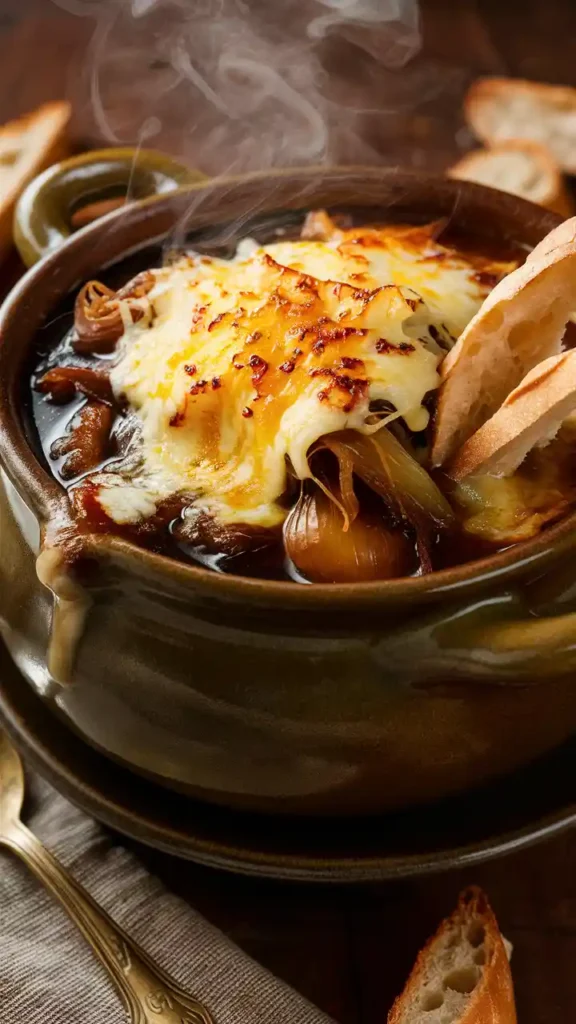
Making French onion soup isn’t about speed—it’s about attention. Here’s my approach:
Caramelize the onions:
Slice 4–5 large yellow onions thinly. Melt 2 tablespoons of butter with 1 tablespoon of olive oil in a heavy-bottomed pot over medium-low heat. Add onions and a pinch of salt. Stir every few minutes, allowing them to soften and slowly turn golden brown over 45–60 minutes. Patience is key—the longer they cook slowly, the sweeter and richer the flavor.
Deglaze and simmer:
Once onions are golden, splash in ½ cup of dry white wine. Scrape up all those sticky, flavorful bits at the bottom of the pot. Add 6 cups of beef or vegetable broth and 2–3 sprigs of thyme. Simmer gently for 20–30 minutes. Taste and season with salt and pepper.
Prepare the bread:
While the soup simmers, slice a baguette into thick rounds and toast until just golden. I often brush a little olive oil or butter on the tops to enhance browning under the broiler.
Assemble and broil:
Ladle the soup into oven-safe bowls. Place a slice of toasted bread on top of each and cover with shredded Gruyère. Broil for 2–4 minutes until the cheese melts and bubbles into golden perfection. Watch carefully—broilers can be unpredictable.
Serve:
The aroma alone is worth the wait. Spoon into bowls, letting the cheese stretch with each bite. Every spoonful should have a little bit of broth, caramelized onion, and gooey cheese—a perfect balance of textures.

French Onion Soup Recipe
- Total Time: 1 hour 45 minutes
- Yield: 4 1x
- Diet: Vegan
Description
This French onion soup recipe transforms simple ingredients into an elegant, comforting dish. Slowly caramelized onions give it sweetness and richness, while beef broth, white wine, and herbs build complexity. Finished with toasted baguette slices and bubbling, melted Gruyère cheese, it’s the kind of meal that feels like a warm hug in a bowl. Ideal for cozy evenings, dinner parties, or anytime you want a taste of rustic French cooking at home.
Ingredients
- 6 large yellow onions, thinly sliced
- 4 tablespoons unsalted butter
- 1 tablespoon olive oil
- 2 cloves garlic, minced
- ¾ cup dry white wine
- 6 cups beef broth (or vegetable broth for vegetarian)
- 2 bay leaves
- 2 sprigs fresh thyme
- Salt and black pepper to taste
- 1 French baguette, sliced and toasted
- 1½ cups grated Gruyère cheese
- Optional: splash of sherry or brandy, Worcestershire sauce
Instructions
-
Caramelize onions in butter and olive oil over low heat for 45–55 minutes until deeply golden.
-
Add garlic, then deglaze with white wine, scraping up browned bits.
-
Pour in broth, add herbs, and simmer uncovered for 30–40 minutes.
-
Meanwhile, toast the baguette slices until crisp.
-
Ladle hot soup into oven-safe bowls, top with toasted bread and cheese.
-
Broil until cheese is bubbly and golden brown.
-
Let rest for a few minutes and serve hot.
Notes
-
Mix cheeses for a more complex topping.
-
Toast bread until very dry to avoid sogginess.
-
For deeper flavor, use homemade broth if possible.
-
Double the batch and freeze leftovers for future cozy meals.
- Prep Time: 15 minutes
- Cook Time: 1 hour 30 minutes
- Category: Soup
- Method: Stovetop + Broiler
- Cuisine: French
Nutrition
- Serving Size: 1 bowl
- Calories: 470
Pairings and Presentation Tips
French onion soup shines on its own, but I love adding small touches when serving. A light green salad with a simple vinaigrette cuts through the richness. A glass of crisp white wine complements the soup’s savory depth.
For presentation, I serve it in rustic, oven-safe bowls. The broiled cheese should be golden with some bubbling edges for that authentic French bistro feel. I sometimes sprinkle a tiny pinch of fresh thyme on top just before serving—simple, but it elevates the aroma and looks beautiful on the table.
When my kids were younger, they were skeptical about the onions. I learned that letting them pick a perfectly melted, cheesy section first helps them warm up to the flavors. By the end of the meal, everyone was scraping their bowls clean.
Pro Tips for the Perfect Bowl
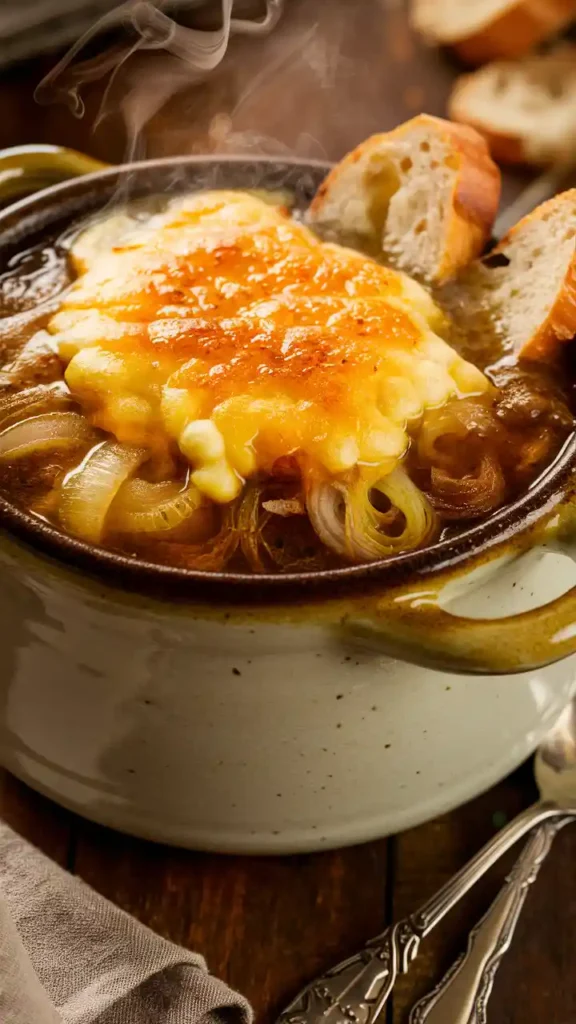
Even after years of making French onion soup, I still pick up small tweaks that make each batch better. One trick I swear by is patience with the onions. I often start them early in the day and let them slowly caramelize while I prep other things—maybe slice bread for later or tidy the kitchen. That slow process builds the rich, sweet flavor that defines a memorable bowl.
Another tip: adjust the liquid to taste. Broth strength can vary, and wine adds subtle depth. I taste halfway through simmering and adjust seasonings, maybe a pinch of salt or a dash of pepper. If you want extra richness, a splash of cream can be stirred in at the end, but don’t overdo it—you don’t want to mask the onions’ natural sweetness.
Cheese is another make-or-break detail. Gruyère should be shredded just before broiling to ensure even melting. I’ve made the mistake of using pre-shredded cheese with anti-caking agents—it doesn’t melt as smoothly. Also, broiling for too long can lead to a crispy-but-bitter layer. Watch carefully, especially if your broiler is strong.
Common Mistakes and How to Avoid Them
Even experienced cooks can stumble on French onion soup. Here are a few mistakes I’ve personally learned from:
- Rushing caramelization: It’s tempting to crank up the heat and speed things along, but this often leads to burnt, bitter onions. Low and slow is the golden rule.
- Skipping the deglaze: Those brown bits on the pot are flavor gold. Use wine or broth to scrape them up—they’re essential for depth.
- Using the wrong bread: Soft sandwich bread will collapse. Toasted baguette or country-style bread holds up under the cheese and absorbs just enough broth.
- Overcrowding the pot: Too many onions in a small pot will steam rather than caramelize. Give them room to brown evenly.
I’ve burned a batch under the broiler before because I stepped away to answer a phone call. Learn from me: stay close when the cheese melts, or you’ll end up scraping a scorched mess.
Storage and Make-Ahead Tips
French onion soup actually keeps really well, which is a blessing if you like making big batches. Here’s what I do:
- Refrigeration: Store soup in an airtight container for up to 3 days. I usually keep the bread and cheese separate until ready to serve—this prevents the bread from turning mushy.
- Freezing: The soup freezes beautifully without the bread and cheese. I portion it into individual containers so I can defrost a single serving. To reheat, simmer gently on the stove—avoid microwaving, which can alter the texture of caramelized onions.
- Make-ahead assembly: You can prepare everything up to the point of broiling and refrigerate overnight. When ready to serve, just assemble the bowls and broil for a few minutes until the cheese is bubbly.
These tricks make French onion soup a manageable, even weeknight-friendly dish despite its slow-cooked appearance.
FAQs About French Onion Soup
Can I make it vegetarian?
Absolutely. Substitute vegetable broth for the beef broth and keep the wine optional. The caramelized onions provide plenty of flavor, so it’s still rich and comforting.
Why is my soup bitter?
Most likely, the onions were cooked too quickly or burned. Always cook low and slow, stirring often, and deglaze the pot properly.
What’s the best cheese for topping?
Gruyère is traditional, but a mix of Gruyère and Emmental adds extra meltiness and a slightly nutty flavor. Avoid overly sharp cheeses—they can overpower the onion base.
Can I skip the wine?
Yes. Wine adds depth, but good-quality broth and slow caramelization are enough to create a flavorful soup.
How do I prevent soggy bread?
Toast the bread before placing it on the soup, and broil just enough to melt the cheese. Serve immediately to keep it slightly crisp at the edges.

